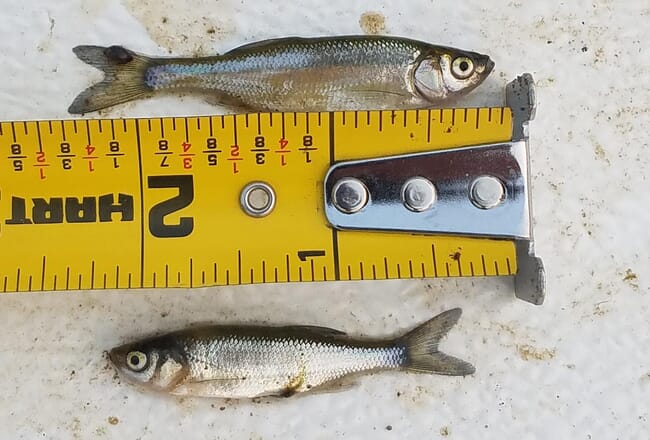
© Don Schreiner
The University of Minnesota Sea Grant Programme and partners are investigating new strategies for increasing in-state production of Golden Shiner fish for Minnesota’s bait industry. The project is supported by a three-year $188,000 grant from the Legislative-Citizen Commission on Minnesota Resources.
Golden shiners are much sought-after bait fish that are in high demand by Minnesota anglers, but they are also in short supply. The 2018 USDA Aquaculture Census reported that golden shiner were the most valuable baitfish produced in the US, with $16.4 million in total sales and more than 3.9 million pounds sold. It takes two years for golden shiner to grow to maturity in the wild and Minnesota’s long, cold winters make raising them outdoors challenging.
Minnesota Sea Grant’s project team seeks to grow golden shiner to market size within one year using four different strategies that use different combinations of indoor and outdoor facilities.
“There is pressure from anglers, bait dealers and legislators to import golden shiner from other states, though this is currently prohibited by law in Minnesota,” said Don Schreiner, Minnesota Sea Grant fisheries specialist and project member. “The primary concerns are that importation can introduce aquatic invasive species, disease and parasites that may harm native fish communities.”
“If successful, this project could increase the supply of in-state grown golden shiners for anglers and create new in-state business opportunities for growing bait,” said Schreiner. “Project success would also reduce the pressure to consider importation.”
Sea Grant’s four golden shiner grow-out strategies
The first of Sea Grant’s four project strategies is to grow golden shiner from eggs to a market size of about four to six inches in one growing season (instead of the usual two years) using an entirely indoor recirculating aquaculture system (RAS). Using a RAS system, which continuously filters and reuses water from the fish tanks, can dramatically reduce the amount of water and space required to intensively produce fish and seafood products.

© Barry Thoele
The second strategy is to raise golden shiner from egg to market size indoors using aquaponics, which is a combination of aquaculture, which is growing fish, and hydroponics, which is growing plants without soil. The roots of hydroponic plants function as a biofilter. They strip ammonia, nitrates, nitrites and phosphorus from the fish wastewater. Then, that clean water is circulated back into the fish tanks.
The third strategy is to raise golden shiner from egg to sac fry, which are about a half inch to one inch and then move the sac fry to constructed outdoor ponds each May. Sac fry are still attached to their yolk sack, which they live on when they are first put in the pond. Once the yolk sac is gone, the fish are big enough to feed on naturally occurring zooplankton in the pond. The sac fry stay in the outdoor ponds over a summer until they grow to market size, then they are harvested in October.
The fourth strategy is to raise golden shiner from egg to fryling indoors in recirculating tanks and then moving them to outdoor ponds. The frylings stay in indoor tanks where they are trained to eat progressively larger and larger food. This feed-training can give frylings a two-month head start on growth over fish grown in the wild. Frylings are moved outdoors when they are one to two inches long.




